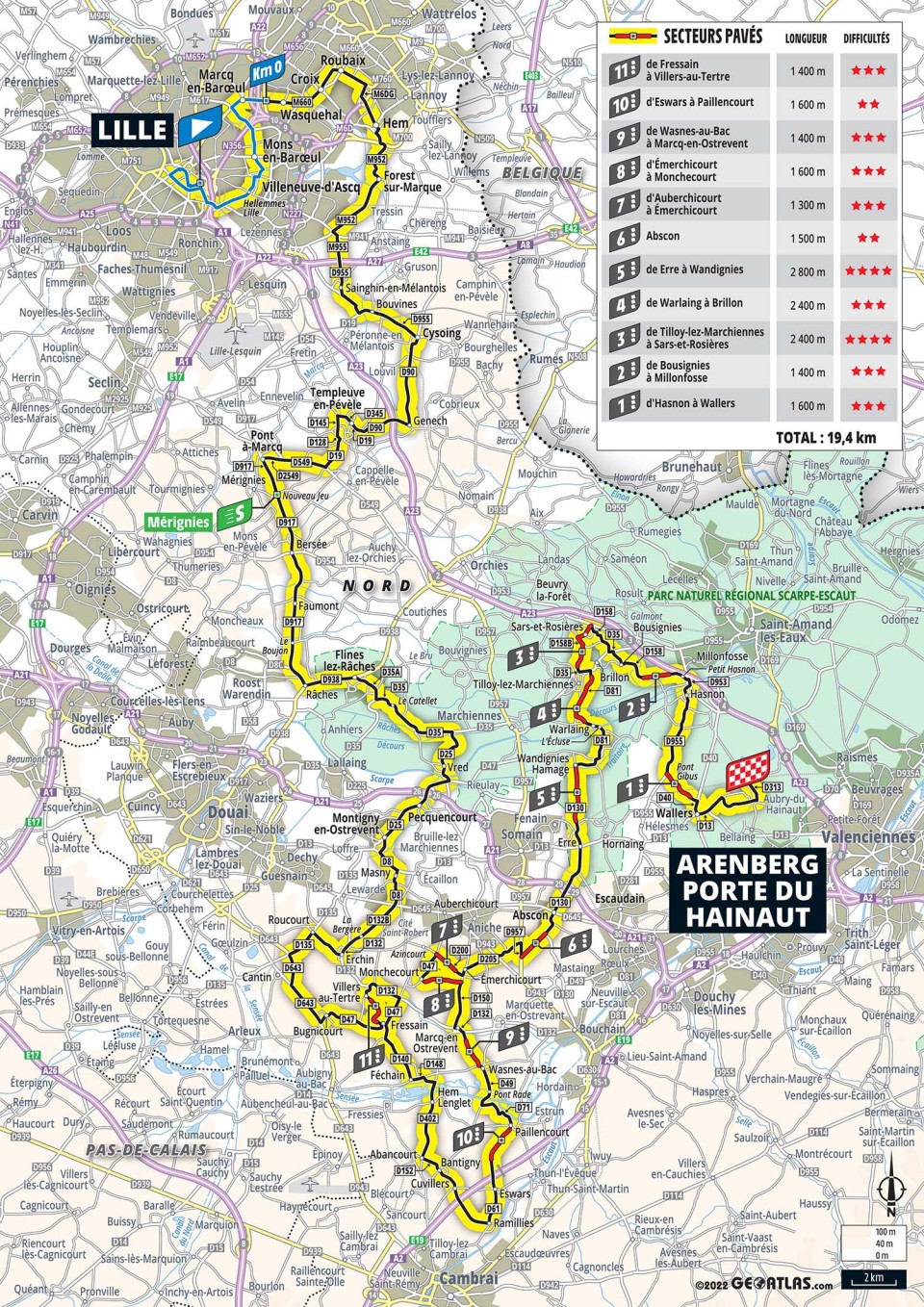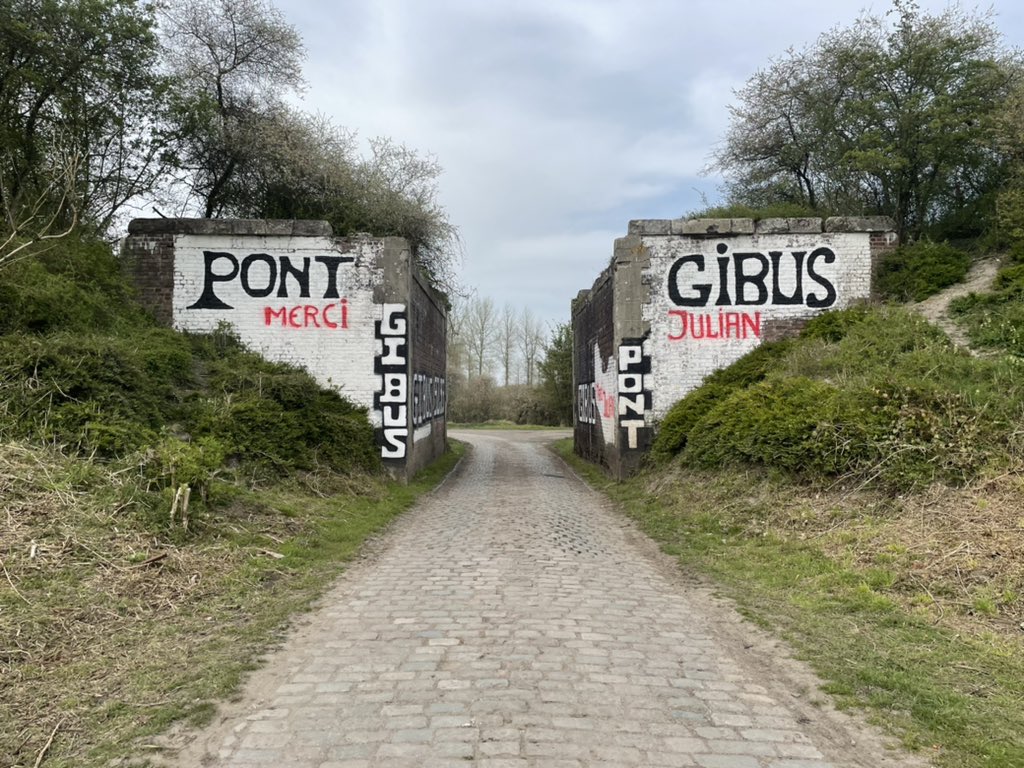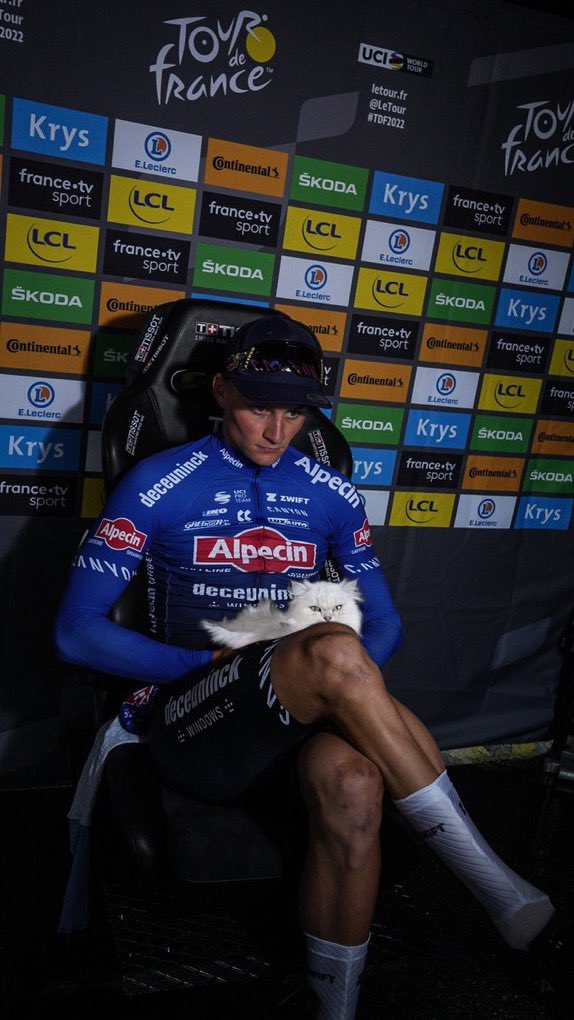- Sep 20, 2017
- 12,467
- 23,552
- 28,180
The cobbles stage, for the first time since 2018. After the shortish route saw a somewhat underwhelming day of racing that year, ASO have responded with… another shortish route. The battle for the stage should be good regardless, but will the GC riders get sucked in this time?
Profile

Map

Route description
Today’s start is in Lille, France’s fourth-largest city by metropolitan area. Having developed in the Middle Ages around the textile industry, it has had quite the volatile history – French Wikipedia has pages for no less than eleven separate sieges. It went on to become a centre of the Industrial Revolution, with the textile remaining central, but the metal industry and the nearby mines also playing a key role. Like many such cities, Lille experienced a downturn as these industries declined in the second half of the 20th century, but it has recovered better than most by leveraging its newfound status as a TGV hub to develop its tertiary sector.
Pretty much the entirety of the stage is in Paris-Roubaix territory, but the first half of the race sticks to asphalt. We do have an intermediate sprint early on, in Mérignies – I doubt the sprinters’ teams will be interested in keeping the peloton together for that long though.


Midway through the stage, the first cobbles sector, Fressain à Villers-au-Tertre, is reached – this is the one that ASO decided to ride in the opposite direction a few weeks ago. We are south of the area that Paris-Roubaix usually traverses – indeed, of the first six cobbled sectors, I can only recall seeing sector 10 in a professional race (the 2018 Tour stage as well as Dunkerque - it's a false flat downhill but don't remember this causing issues in the past) before.
However, the finale starts where it always does in Arenberg stages, the north-to-south chain of three sectors between Erre and Sars-et-Rosières that features the toughest cobbles of the day. Unlike in previous variations of this stage, it’s raced south to north, putting these sectors a bit further from the finish. Even so, sector 3 ends at 17.8 kilometres from the line.
From here, the going gets a little easier, although there are still two sectors left to race. Sector 2 is comparatively unknown, only having been seen occasionally in Paris-Roubaix, and is completely straight. Just after it, the route turns south to head to the final sector, just like in 2014, it’s the iconic Pont-Gibus. This ends at 5.1 kilometres from the line.
2014 stage coverage - the stretch from Pont Gibus to the line should be identical to tomorrow's stage:
Final kilometres


Should be identical to the 2014 stage. As always, the finish is in front of the former mine in Arenberg, which is now used as the regional headquarters of Porte du Hainaut and a cinematography-themed attraction. Of course, it’s a well-known location in cycling, on account of it being the entrance to Trouée d’Arenberg.

Some bridges don’t need to be intact to be iconic.
Profile
Map
Route description
Today’s start is in Lille, France’s fourth-largest city by metropolitan area. Having developed in the Middle Ages around the textile industry, it has had quite the volatile history – French Wikipedia has pages for no less than eleven separate sieges. It went on to become a centre of the Industrial Revolution, with the textile remaining central, but the metal industry and the nearby mines also playing a key role. Like many such cities, Lille experienced a downturn as these industries declined in the second half of the 20th century, but it has recovered better than most by leveraging its newfound status as a TGV hub to develop its tertiary sector.
Pretty much the entirety of the stage is in Paris-Roubaix territory, but the first half of the race sticks to asphalt. We do have an intermediate sprint early on, in Mérignies – I doubt the sprinters’ teams will be interested in keeping the peloton together for that long though.


Midway through the stage, the first cobbles sector, Fressain à Villers-au-Tertre, is reached – this is the one that ASO decided to ride in the opposite direction a few weeks ago. We are south of the area that Paris-Roubaix usually traverses – indeed, of the first six cobbled sectors, I can only recall seeing sector 10 in a professional race (the 2018 Tour stage as well as Dunkerque - it's a false flat downhill but don't remember this causing issues in the past) before.
However, the finale starts where it always does in Arenberg stages, the north-to-south chain of three sectors between Erre and Sars-et-Rosières that features the toughest cobbles of the day. Unlike in previous variations of this stage, it’s raced south to north, putting these sectors a bit further from the finish. Even so, sector 3 ends at 17.8 kilometres from the line.
From here, the going gets a little easier, although there are still two sectors left to race. Sector 2 is comparatively unknown, only having been seen occasionally in Paris-Roubaix, and is completely straight. Just after it, the route turns south to head to the final sector, just like in 2014, it’s the iconic Pont-Gibus. This ends at 5.1 kilometres from the line.
2014 stage coverage - the stretch from Pont Gibus to the line should be identical to tomorrow's stage:
Final kilometres


Should be identical to the 2014 stage. As always, the finish is in front of the former mine in Arenberg, which is now used as the regional headquarters of Porte du Hainaut and a cinematography-themed attraction. Of course, it’s a well-known location in cycling, on account of it being the entrance to Trouée d’Arenberg.

Some bridges don’t need to be intact to be iconic.







